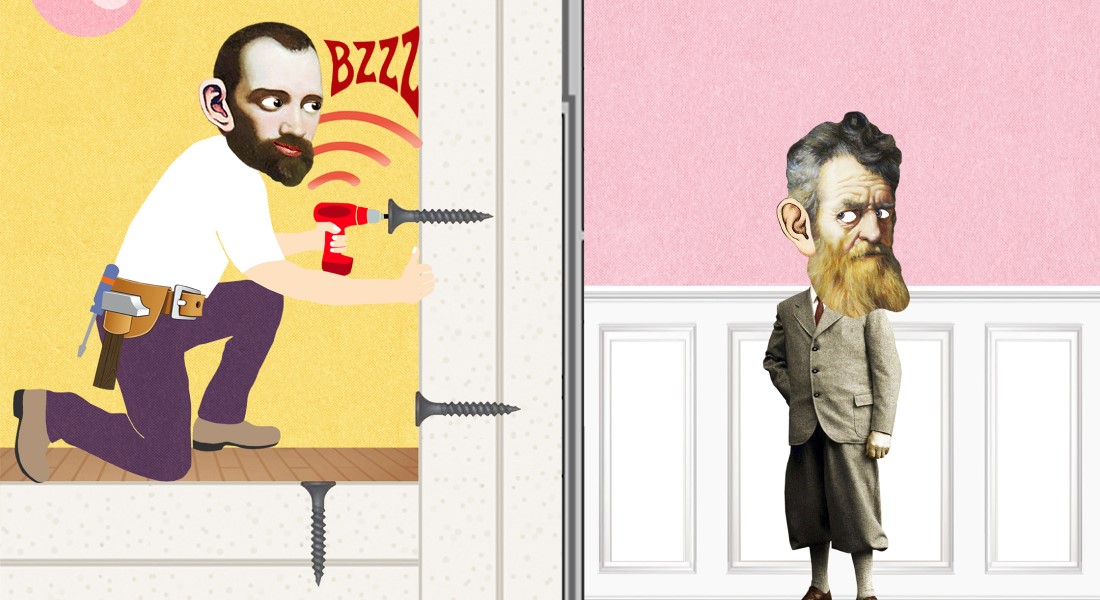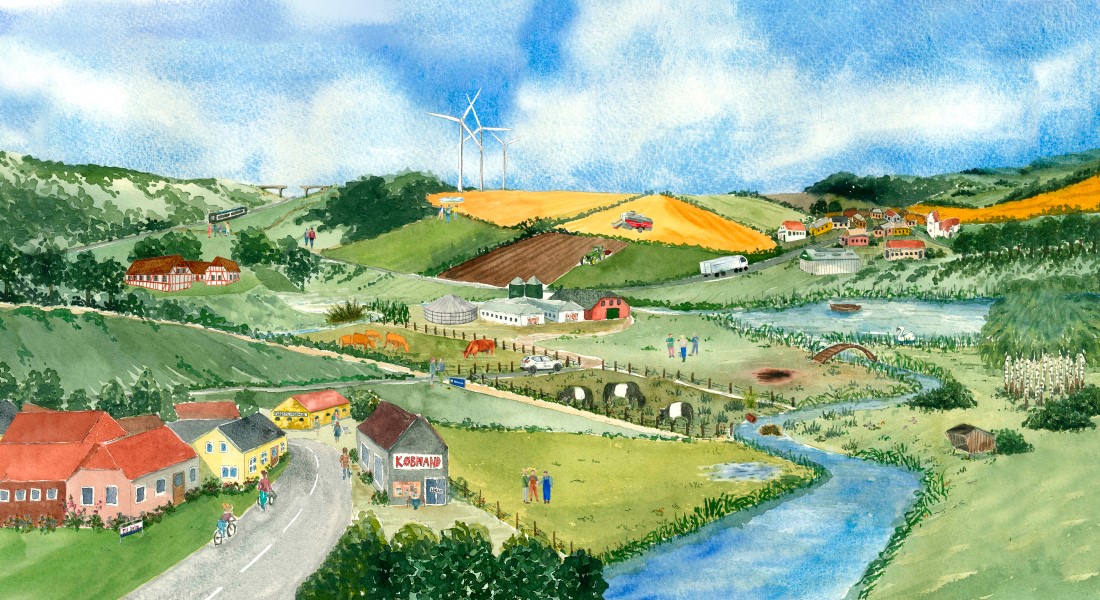Highlighted research with societal impact
These examples are a mix of research projects, initiatives and events done at the Department of Anthropology. All the highlights are in one way or another examples of research with societal impact.
What was the aim of the project?
The aim of the research project 'Together Around Neighbour Noise – Recommendations for Handling Neighbour Noise' was to develop solutions to everyday issues surrounding neighbour noise. One of its specific aims was to present a set of tools to residents, housing committees and housing administrations, which they could use to solve noise related issues in collaboration.
What impact has been created?
The research project's findings were collected in an easy-to-use handbook with 12 specific pieces of advice. The handbook offers suggestions as to how involved parties can handle neighbour noise and related conflicts in practice. The project helped to bring the importance of sound insulation to the attention of residents, housing committees and housing administrations, thereby highlighting that neighbour noise is not only caused by inconsiderate behaviour and a lack of tolerance. Armed with tools such as the handbook, residents and housing committees became more prepared to handle noise, as well as related challenges that occur when neighbours' everyday sounds become inconvenient noise for residents.
The handbook is accessible online and can be downloaded for free (danish only).
How was the change created?
The findings of the project are based on a series of workshops and interviews with residents and specialists in the building industry. Besides actively involving the residents, researchers collaborated with an acoustician and used insights from the previous project 'What is Neighbour Noise' (danish only). Inputs from all the participants are used in the final 12 pieces of advice presented in the handbook.
Read more about the neighour noise research project here (Danish only).

What was the aim of the project?
In the years 2016-2017, a series of terrorist attacks happened in European urban spaces - including in Copenhagen. Until then, all Danish public buildings and spaces had been open to the public without any sort of security measures or barriers. When terrorism came to Denmark, the question of how to go about this urgent threat came with it.
What impact has been created?
In a country where there until recently were few protocols for security and counterterrorism, the Danish Counterterrorism Network has played a key role in developing a partnership resting on a common language and the contours of a Danish approach to counterterrorism. Ilum and the 12 network members developed a green paper on counterterrorism in Denmark.
Through the project, Stine Ilum advised Nordic cities on matters of safety and security, and published a practical tool box on how cities can create safe urban spaces.
Insights from the research were presented to Danish municipalities, the Danish Security and Intelligence Service, interest organizations, at industrial conferences as well as through in newspapers and films etc.
How was the change created?
As part of her research on counterterrorism in Europe, Ph.D. Stine Ilum has followed the development of a new security and counterterrorism industry in Denmark. With the aim of both collecting ethnographic data and contributing to the field through her research, Ilum established The Danish Counterterrorism Network. It is professional network with more than 50 members working with counterterrorism in Denmark - from municipalities, state agencies, the UN, and police to architecture firms, security companies, researchers and infrastructure agencies.

What was the aim of the project?
In light of the climate and biodiversity crisis, the agricultural landscape in Denmark is undergoing change. This project aims to develop a storytelling method for co-creating future multifunctional landscapes that makes room for environmental protection, agriculture, biodiversity and recreational life.
What impact has been created?
According to project partners, the collaboration has changed the way they think about citizen engagement and co-creation, generating increased attention to people’s stories about landscape relations and how to mobilize their knowledge in planning processes. As a project partner phrased it: “Managing nature is about managing people. This is new to our way of thinking.” Likewise, a farmer shared that the project has improved the dialogue between farmers and public sector actors. The project is currently testing the storytelling method as co-creation tool (Danish only).
The project has provided concrete input for the evaluation of the multifunctional land consolidation scheme commissioned by the Danish Agricultural Agency in 2022. In meetings and hearings the project has advocated for a land reform in Denmark (Danish only)
How was the change created?
Researchers collaborated with three municipalities and the Danish Nature Agency on processes of multifunctional land consolidation in three areas in Central Jutland. Researchers investigated the stories that circulate about the landscapes, how their functions and values are negotiated, and what new landscapes emerge from the process.
The collaborative endeavour was translated into concrete methodological tools for landscape co-creation and citizen engagement in nature and landscape projects. Moreover, the project developed policy briefs and maintains an ongoing dialogue with key stakeholders with a view to inform political decision-making about future land use.

What was the aim of the project?
In 2016, researchers from the Technical University of Denmark (DTU) and the University of Copenhagen launched the 3-year research project Smart Cities Accelerator in collaboration with a group of Danish and Swedish municipalities. The aim of the project was to investigate how to optimize sustainable energy systems and create a better indoor climate in public buildings.
The research began in public schools in the municipality of Høje Taastrup. The indoor climate of the classrooms is essential for both the wellbeing of teachers and students and for the students’ learning. High energy usage in school buildings is also costly for municipal operating budgets and emits unnecessary amounts of CO2.
What impact has been created?
The project first resulted in the digital resource www.skoleklima.dk, where the researchers collected their knowledge. With this resource, users could track their building’s levels of CO2, temperature, noise, and condensation. This gave teachers and students the opportunity to improve the indoor climate, for instance by opening the windows when the CO2 levels were too high. The resource also gave the schools’ service staff an overview of the buildings’ energy usage and current condition.
As a result of collaborating with the universities’ researchers, the municipality of Høje Taastrup soon made investments in the school buildings which immediately improved the indoor climate for students and staff.
This resource has later been developed into the corporation Climify, which together with corporations like Velux, Danfoss and Panasonic received 12.7 million kr. in funding from Innovationsfonden to develop user-driven solutions to monitoring the indoor climate.
How was the change created?
When the researchers analyzed the technical data from the schools, it soon became clear that the CO2 levels in several classrooms was too high, which affected the students’ ability to concentrate. The anthropologists’ fieldwork among students and staff also shows that each person’s experience of the indoor climate was different, which made it hard for the schools to prove to the municipality that their indoor climate was poor.
The researchers therefore developed methods and tools that the school’s staff – and students in the long term – could use to create a databased overview of the indoor climate. This gave schools and politicians in the municipality a shared basis for decision-making when renovating school buildings.

